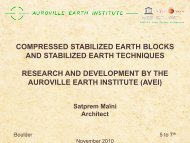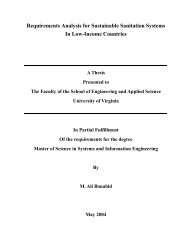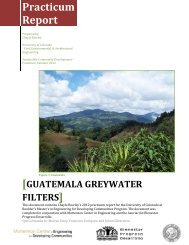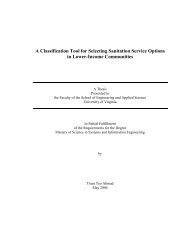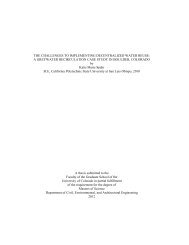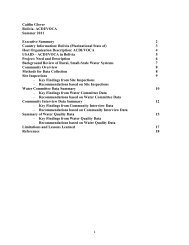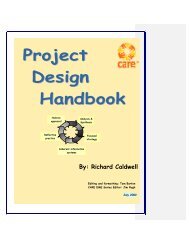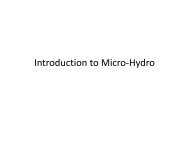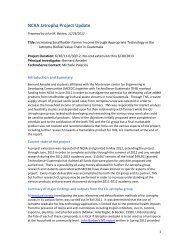SCEBs - University of Colorado Boulder
SCEBs - University of Colorado Boulder
SCEBs - University of Colorado Boulder
You also want an ePaper? Increase the reach of your titles
YUMPU automatically turns print PDFs into web optimized ePapers that Google loves.
this point <strong>of</strong> testing. The testing described in this section should continue to further<br />
investigate the relationship between rebound and UCS values, paying special attention to<br />
the water content <strong>of</strong> the SCEB during sampling. Also, the Schmidt Hammer used for this<br />
analysis is intended to test hard concrete surfaces. It is likely that a more sensitive<br />
Schmidt Hammer would produce better results.<br />
5.1.3. Cylinder Tests<br />
During the production <strong>of</strong> the UMU large blocks described in Sections 4.2.2.2 and<br />
4.2.2.3, the author set aside a portion <strong>of</strong> each <strong>of</strong> the soil mixes to prepare cylindrical<br />
specimens (pictured in Figures 5.10 & 5.11). The soil was compacted into plastic molds<br />
in a similar method to the specifications for a Proctor Test (ASTM D698 or D1557).<br />
This process involves adding a layer <strong>of</strong> soil to the mold and using a metal rod as a ram to<br />
manually compact the soil. This process was repeated adding layer after layer <strong>of</strong> soil<br />
until the mold was full. The specimens were cured with the large blocks in the same<br />
environmental conditions for the same amount <strong>of</strong> time. Following curing, the specimens<br />
were tested under uniaxial compression. Figure 5.12 shows the relationship between the<br />
large block UCS and the corresponding cylinder UCS.<br />
63



